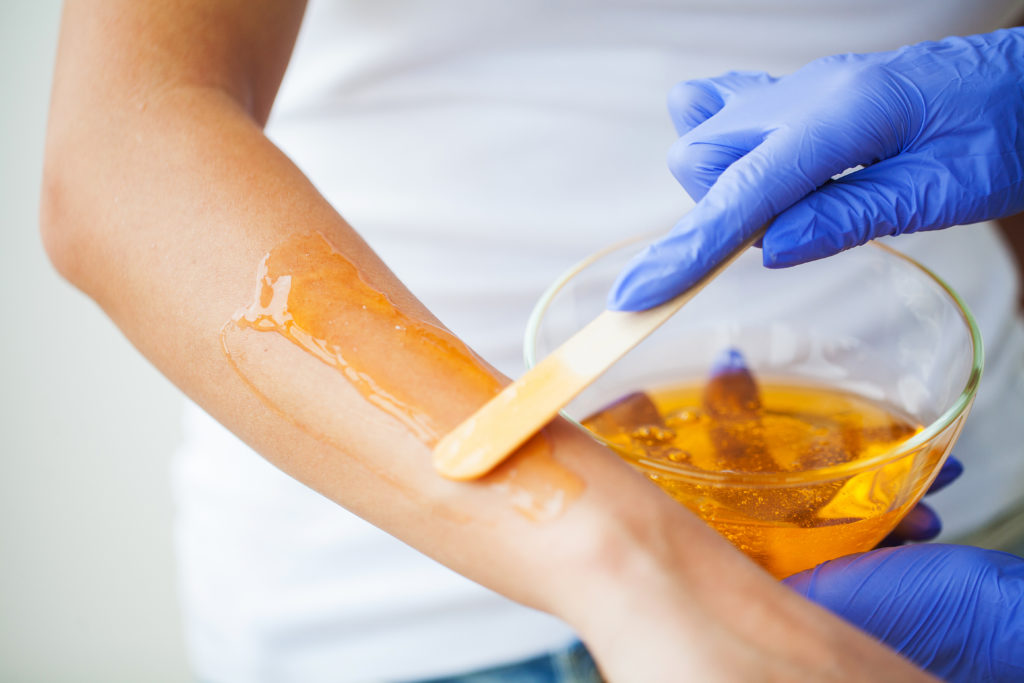Body Waxing
Avoid these mistakes when self-waxing
You save money on expensive salons and still achieve the beautifully-smooth skin you’re looking for. That’s all good news with summer around the corner!
However, the prospect of waxing at home can be daunting as well. Making mistakes is all too common, and the last thing you want is to walk away in worse shape than before.
Knowing what you’re doing is vital to seeing the best results. Hopefully, the tips in this post will help in this regard.
Incorrect Preparation
There are multiple types of wax available in the market, not all waxes are made equal.
Some are sugar-based and others, like those used in salons, are resin-based. This primary distinction dictates how you need to prepare your skin beforehand.
It’s all to do with washing. A common assumption is that you have to wash your skin before applying the wax. Yet that’s not always the case!
Only with sugar-based wax is washing required.
As a water-soluble wax, any oil on your skin doesn’t interact well with the process. You have to remove that oil for the sugar-wax to work best.
The opposite is true for resin-based waxes, where you benefit from keeping the oil on your skin. It prevents the wax from adhering too strongly to your skin; you feel less pain throughout the waxing process!
Applying too much wax
Resist the temptation to apply too much wax when you’re waxing at home! It’s the classic rookie error. People, somewhat understandably, assume that more wax leads to better results.
They smear it all over themselves liberally in the process. Alas, a serious sticky mess ensues, as opposed to the smooth, hairless outcome they were after.
It’s just not how liquid wax works best! Less is definitely more in the world of self-waxing. You only need a thin layer in order to get the best results.
Not heating to right temperature
This point leads on from the last.
Basically, you’ll only achieve the thin layer of wax you need by heating it to the right temperature beforehand.
Heating soft wax is a necessary part of the process involved. By popping it in the microwave (or a designated wax warmer) you warm it up and cultivate the required viscosity for the task.
However, many people struggle to get the temperature right.
Some overheat it, thereby making the wax too runny and risking burns. Others under-heat it, which leaves the wax too thick and putty-like.
Avoid both outcomes by waiting for the perfect temperature. Only then will you achieve the texture you need to apply the thin layer of wax required for optimal results.
Your hair has to be at least ¼ inch long, before you wax
It’s tempting to rush into the waxing process.
Especially when you’re desperate to be hair-free!
Unfortunately, it rarely delivers worthwhile results. You actually need a certain amount of hair growth in order for the wax to work. If you don’t wait long enough, then your hair won’t be long enough for the wax to latch onto.
Try holding out for two weeks or so, or until your hair is ¼ of an inch long.
That’ll provide sufficient growth for the wax to work its magic. Combine that with the right skin preparation and you’re onto a winner.
However, you’ll also struggle to wax hair that’s too long! It’s far more likely to be messy and painful. Trim back any hair that exceeds the ¼ inch mark prior to waxing it.
Master waxing step by step
Some body parts are easier to wax than others. For example, there’s a world of difference between your underarms and your legs. Your legs are firm, accessible, and level-surfaces on which to apply the wax. Your underarms, well, aren’t!
Avoid the mistake of trying to wax challenging areas when you’re new to the process.
Anybody who’s getting to grips with waxing should probably stick to easy parts first. Don’t, and you may come away with nothing but a sticky mess and disappointing results! With practice and burgeoning confidence, you can then move onto the trickier bits.
Waxing too slowley
Let’s face it, waxing isn’t the nicest way to spend an afternoon! Tearing out the hair from your body isn’t many peoples’ idea of a good time.
However, a sure-fire way to make it worse is going too slowly. Treat it like a band-aid! Aim for a quick, sharp, and efficient tug rather than a slow, anguished pull one.
The results will be better and you’ll suffer less in the process.

